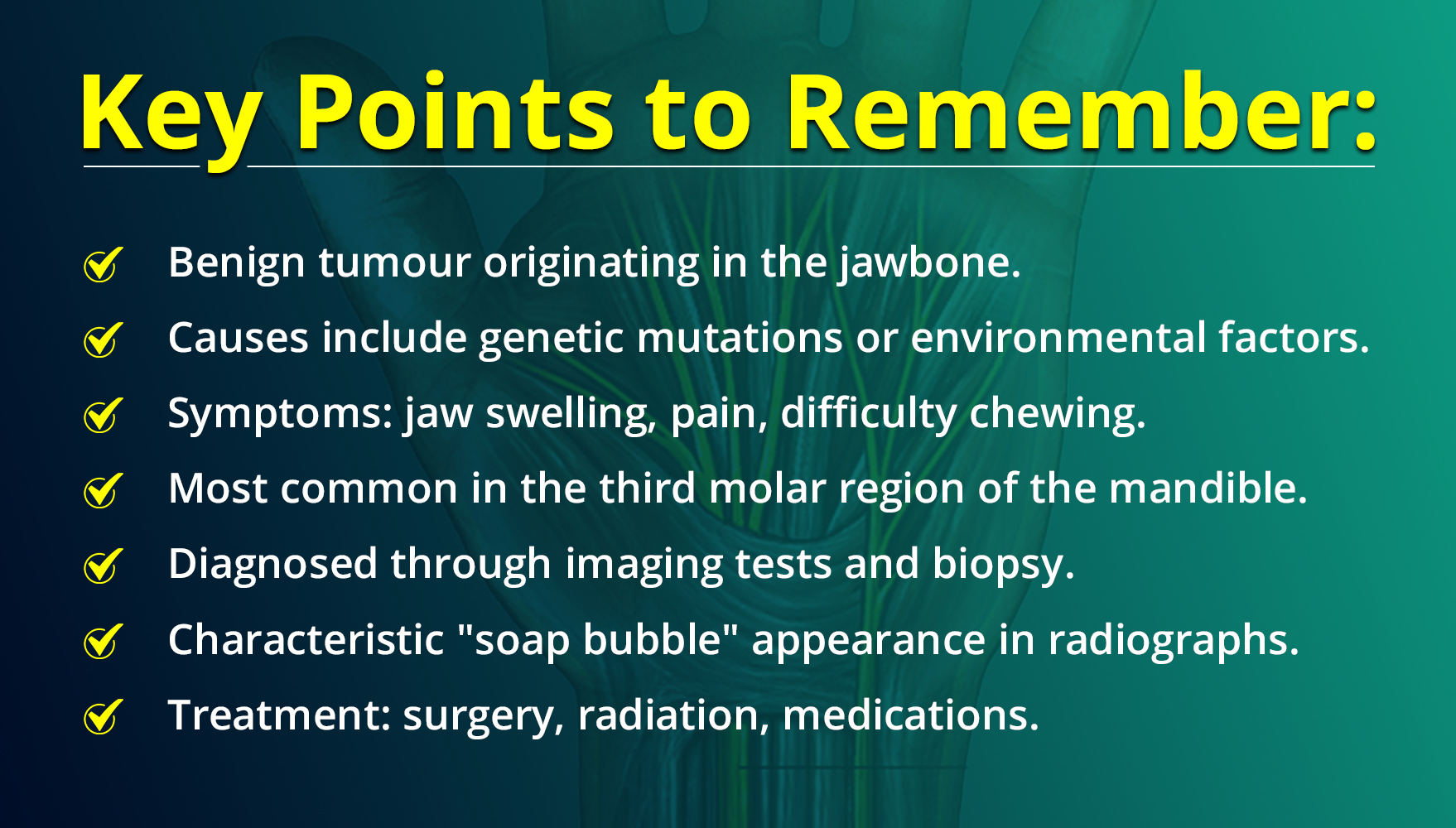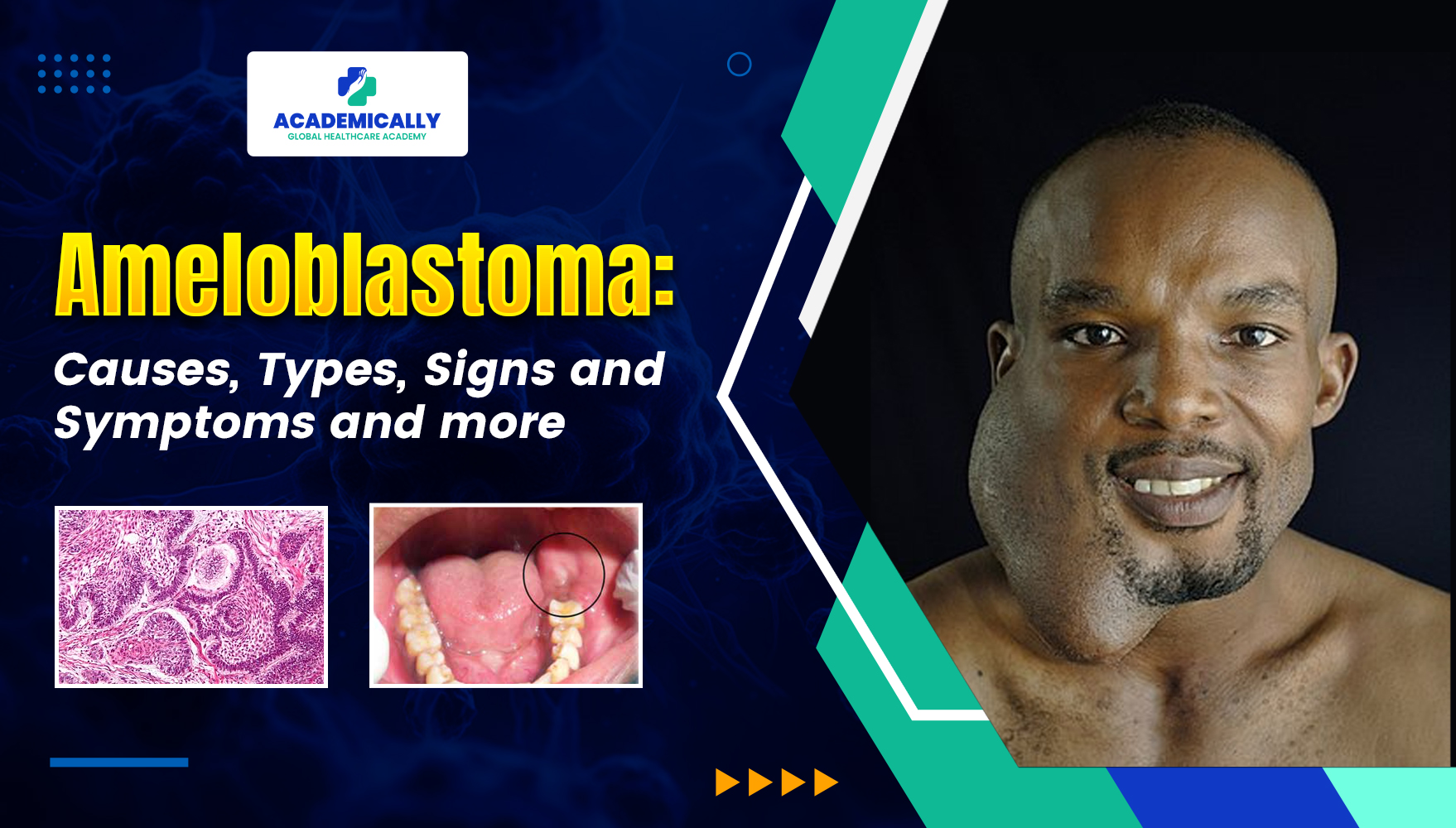Types of Ameloblastoma
- Conventional ameloblastoma: This is the most common type and tends to grow, often found in the lower jawbone. Approximately 10% of cases recur after treatment.
- Unicystic ameloblastoma: Less aggressive than the conventional type, it typically occurs at a younger age and is commonly located at the back of the lower jawbone near the molars. Recurrence can occur post-treatment.
- Peripheral ameloblastoma: A rare type affecting the gums and oral tissues in the upper or lower jaw. It carries a low risk of recurrence after treatment.
- Metastasising ameloblastoma: Extremely rare, characterised by tumour cells spreading away from the primary site in the jawbone.

Signs and Symptoms of Ameloblastoma
- Ameloblastomas typically manifest as a slow-growing, painless swelling in the jaw region, with the mandible (lower jawbone) being the most common site.
- While most cases occur in the third molar region of the mandible, they can also develop in the maxilla (upper jawbone).
- Due to their aggressive nature, ameloblastomas can lead to facial disfigurement, dental misalignment, and tooth loosening as they grow.
- In some instances, neighbouring tissues like the sinuses and eye sockets may become involved.
- Although pain is not a characteristic symptom, it can occur if there is bleeding within the tumour or surrounding tissues.
Diagnosis
- Diagnosis involves a combination of imaging techniques such as dental X-rays (orthopantomogram), CT scans, and MRIs to assess the extent of bone and soft tissue involvement.
- Radiological findings may show lytic lesions with scalloped margins for unicystic ameloblastomas or a characteristic "soap bubble" appearance for conventional or multicystic types.
- Definitive diagnosis is confirmed through a biopsy of the lesion, which helps rule out other bone disorders and confirm the presence of ameloblastoma.
- In cases of suspected metastasising ameloblastoma, a PET scan may be conducted to detect distant metastasis sites.
Treatment
- Treatment typically involves radical maxillofacial surgery, where a portion of the affected jawbone is removed along with the tumour in a complete "en bloc" resection.
- Reconstruction of the jaw may be necessary post-surgery to address any functional impairments.
- Chemotherapy may be considered in cases of metastasising ameloblastoma, often in combination with surgical intervention.
- Targeted molecular therapies like dabrafenib or vemurafenib may be utilised for ameloblastomas positive for the BRAF V600 mutation.
- Prognosis depends on various factors, including age, tumour location, size, and stage of disease, with untreated cases posing risks of severe facial disfigurement and airway compromise.
Final Words
Ameloblastoma is a rare but potentially serious condition that requires timely diagnosis and appropriate treatment. It is an important topic in dentistry and in many competitive exams like the Australian Dental Council (ADC) Exam.
ADC exam is the gateway for dentists to upskill their career and life. Academically’s ADC Preparation Course prepares dentists to ace the exam on the first attempt.

Fill up this form for a free one on one counselling session.


